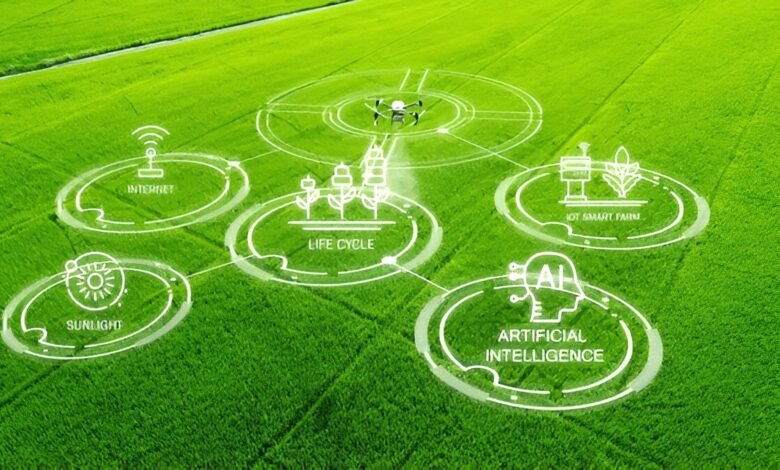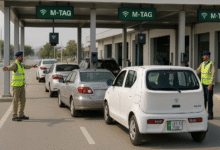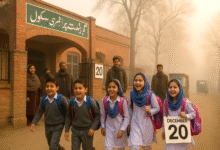
Farming in Pakistan has always been deeply rooted in tradition—plows cutting through dusty fields, sun-scorched hands, and generations of wisdom passed down like folklore. But here’s the twist: that familiar image is evolving fast. And the reason? It’s not just tractors or better seeds. It’s tech. More specifically, it’s the Internet of Things, or IoT, stepping into the soil.
Now, before you picture robots planting mango trees or satellites milking cows—let’s set the scene. IoT in agriculture isn’t sci-fi. It’s already here, working quietly behind the scenes, and it’s poised to reshape how farmers grow, harvest, and thrive in Pakistan.
Wait, What Exactly Is IoT in Agriculture?
Let’s put it simply. Imagine every tool on a farm—from irrigation pipes to soil sensors—connected to the internet, talking to each other, and sharing real-time data. That’s IoT in action. It’s not just smart gadgets; it’s a whole system of connected devices that help farmers make decisions based on live information.
Instead of guessing whether to water crops today, a farmer gets a ping from a sensor buried in the soil saying, “Hey, we’re thirsty down here.” Instead of spraying pesticides all over the place, drones scan the field and pinpoint the exact spots that need attention. Pretty neat, right?
Now, let’s dig into why this matters so much for Pakistan’s future.
Why Pakistan? Why Now?
Pakistan is an agricultural country at its core. Around 40% of the labor force is tied to farming, and crops like wheat, rice, and sugarcane are national staples. But we’re also facing real challenges:
-
Water scarcity—yes, that’s already knocking at the door.
-
Climate unpredictability—hello, surprise floods and scorching heatwaves.
-
Soil degradation—we’re wearing out our land faster than it can heal.
Here’s the thing: traditional farming methods just don’t cut it anymore. If we want to feed a growing population and still have water left for the next generation, we need to be smarter about how we farm. That’s where IoT swoops in.
The Real-Life Tech That’s Already Working (Or Getting There)
So what does IoT on the ground look like? It’s not all just sensors and satellites. Let’s break it down:
1. Smart Irrigation Systems
These are like the Netflix of watering crops—personalized, data-driven, and efficient. Sensors in the soil monitor moisture levels and then automatically adjust water usage. In a water-starved country like Pakistan, this isn’t just cool—it’s necessary.
Some farms in Punjab are already experimenting with drip irrigation systems tied to IoT sensors. Farmers have reported saving up to 50% of their water usage. And let’s be honest, that’s a game-changer.
2. Climate and Weather Monitoring Stations
Instead of relying on the evening news or chai-shop gossip to know when rain’s coming, IoT-connected weather stations give hyperlocal forecasts—down to specific farms. That means better decisions on when to sow, fertilize, or harvest.
And you know what? Timing makes all the difference between a good harvest and a disaster.
3. Livestock Monitoring
Ever tried keeping track of a hundred goats with nothing but a stick and some yelling? IoT collars fitted with GPS and biometric sensors monitor animal health, movement, and behavior. If one of them has a fever, the farmer knows instantly.
It’s kind of like Fitbits for cows—only with less jogging.
4. Drones and Satellite Imagery
Okay, this one sounds like sci-fi—but it’s real. Drones equipped with infrared cameras can fly over fields, spotting crop health issues that the naked eye would miss. They can also spray fertilizer or pesticides with surgical precision.
Some universities in Pakistan are already partnering with agri-startups to make drone tech affordable and accessible to rural farmers.
What’s Holding It Back?
Let’s not paint the picture too rosy. While the future looks promising, there are a few potholes on this smart farming road.
– Cost and Accessibility
IoT systems aren’t cheap. A small-scale farmer in Sindh or Balochistan isn’t likely to drop Rs. 200,000 on a soil sensor setup without serious support.
But here’s a thought: what if the government subsidized IoT kits the way they do fertilizer? Or what if local startups created ultra-low-cost versions just for small farms?
– Internet Connectivity
Here’s the irony—IoT needs the internet to work, but rural Pakistan often struggles with basic 3G, let alone high-speed Wi-Fi. Without reliable connectivity, the most advanced sensor is just a fancy brick.
Thankfully, telecom companies and government programs are slowly extending coverage into remote areas. It’s not perfect, but it’s happening.
– Tech Literacy
This one’s big. Even if you hand a farmer the best gadget, it’s useless if they don’t know how to use it. The solution? Community-based training, demo farms, and farmer-to-farmer mentorship programs. Tech adoption works best when it’s peer-led, not lecture-driven.
So, what’s the big picture?
IoT in agriculture isn’t just a trend—it’s a necessity. In a country where every drop of water, every acre of land, and every harvest matters, smarter farming means survival. And it’s not about replacing farmers—it’s about empowering them.
Just imagine:
-
Farmers waking up and checking their phone—not to scroll Instagram—but to get an alert on crop disease risk.
-
A family in Tharparkar is using 30% less water and growing 30% more food thanks to connected tech.
-
An entire rural community increasing income, reducing waste, and protecting their land.
Doesn’t that sound like something worth investing in?
Looking Ahead: What Needs to Happen Next?
If Pakistan wants to make smart farming the norm instead of a novelty, a few things need to click into place:
-
Public-Private Collaboration: Tech companies, government departments, and NGOs need to work together. We don’t need 50 different apps—we need systems that actually talk to each other.
-
Startup Incentives: Pakistan’s agri-tech sector is growing, but it needs fuel. Tax breaks, microloans, and incubation programs can help founders build tools tailored to local needs.
-
Youth Involvement: Let’s face it—young people don’t dream of farming anymore. But smart farming? That’s got some real buzz. IoT could actually bring a tech-savvy generation back to the fields, armed with code instead of just a sickle.
Final Thoughts (And a Little Nudge)
Look, farming doesn’t need to be old-school to be real. It can be high-tech and still be grounded in tradition. IoT isn’t here to erase the wisdom of our elders—it’s here to amplify it. To blend ancestral instinct with modern insight.
If you’re someone working in agri-policy, rural development, or even just curious about the future of food in Pakistan—now’s the time to pay attention. Smart farming isn’t a luxury. It’s the lifeline.
And to every young Pakistani wondering if farming has a future: oh yes, it does. It just might be smarter than you ever imagined.











